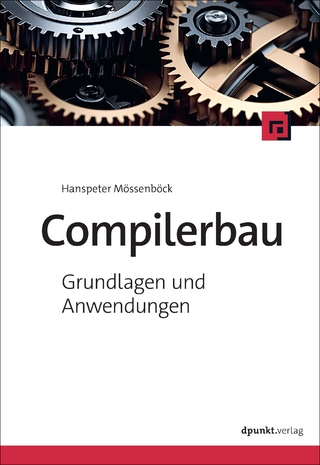
Pro Jakarta EE 10
Apress (Verlag)
978-1-4842-8213-7 (ISBN)
Jakarta EE 10 comes with a significant number of improvements over Java EE 9 technologies and adopts a series of new technologies. This book starts out with a concise development procedure proposal and shows NetBeans as an alternative IDE to Eclipse. It also talks about versioning, software repositories, and continuous integration techniques. The web tier of enterprise application architectures is covered, including state-of-the-art techniques such as web sockets and front end (JavaScript) related frameworks.
The book presents a survey of architecture-related advanced topics, including micro profiles. In a supporting technologies chapter, JSON and XML processing methods are revisited and deepened, and the usage of scripting engines is introduced.
A resources chapter discusses enterprise resource integration, such as resource adapters and Hibernate as a mapper between the SQL and the Java world. Also covered is the usage of no-SQL databases. A security chapter shows advanced security enhancement techniques for use of Jakarta EE in corporate environments. The last chapter talks about advanced logging and monitoring techniques, serving both developers and operations staff.
What You Will Learn
Build complex Jakarta EE applications that run in corporate or other enterprise settings
Create a professional development workflow using Jakarta EE
Build more advanced web development applications
Work with more advanced supporting technologies to increase application maturity and stability in a corporate environment
Do enterprise resource integration, including custom resource adapters
Utilize security enhancements of enterprise-level Jakarta EE applications
Leverage techniques to monitor and log in a corporate environment, including memory usage and performance troubleshooting
Who This Book is For
Experienced Java programmers and web developers, especially those with some prior experience with the Java EE platform
Peter Späth graduated in 2002 as a physicist and soon after became an IT consultant, mainly for Java-related projects. In 2016 he decided to concentrate on writing books, with his main focus set on software development. He has written two books on graphics and sound processing and two books on Android and Kotlin programming. His new book addresses Jakarta EE developers who want to develop enterprise-level Java applications using Java 8.
Part I: Development Workflow.- 1: Installing a Development Server.- 2: Creating and Building Projects With Eclipse.- 3: Development With NetBeans as IDE.- 4: Git and Subversion.- 5: Continuous Integration.- 6: Corporate Maven Repositories.- Part II: Advanced Web Tier Topics.- 7: Facelets.- 8: Faces Custom Components.- 9: Flows.- 10: Websockets.- 11: Frontend Technologies.- 12: Form-based Authentication.- 13: Client Certificates.- 14: REST Security.- 15: Java MVC.- Part III: Advanced Architecture-related Topics16: Microprofiles.- 17: Custom CDI.- 18: Interceptors.- 19: Bean Validation.- 20: Jakarta EE Concurrency.- 21: Batch Processing.- Part IV: Useful Supporting Technologies.- 22: XML Binding.- 23: JSON Handling.- 24: Jakarta Mail.- 25: Application Client (Groovy).- 26: Adding Scripting Languages.- Part V: Advanced Resources-related Topics.- 27: Hibernate as ORM.- 28: Connectors.- 29: Caching.- 30: NoSQL.- Part VI: Security Enhancements.- 31: Secured JMX.- 32: Java Web Tokens with Encryption.- 33: Java Enterprise Security.- Part VII: Advanced Monitoring and Logging.- 34: Monitoring Workflow.- 35: Logging Pipeline with Fluentd.- 36: Performance Troubleshooting.- 37: Garbage Collection.- 38: Memory Troubleshooting.- 39: Custom Log4j Appender.
| Erscheinungsdatum | 02.06.2023 |
|---|---|
| Zusatzinfo | 44 Illustrations, black and white; XX, 492 p. 44 illus. |
| Verlagsort | Berkley |
| Sprache | englisch |
| Maße | 178 x 254 mm |
| Themenwelt | Mathematik / Informatik ► Informatik ► Programmiersprachen / -werkzeuge |
| Informatik ► Theorie / Studium ► Compilerbau | |
| Mathematik / Informatik ► Informatik ► Web / Internet | |
| Schlagworte | Apache • Cloud • Code • Development • Eclipse • EJB • Enterprise Edition • J2EE • Jakarta EE 9 • Java EE • JavaServer Faces • JPA • JSF • JSON • Native • NetBeans • Persistence • programming • security • source |
| ISBN-10 | 1-4842-8213-2 / 1484282132 |
| ISBN-13 | 978-1-4842-8213-7 / 9781484282137 |
| Zustand | Neuware |
| Haben Sie eine Frage zum Produkt? |
aus dem Bereich


